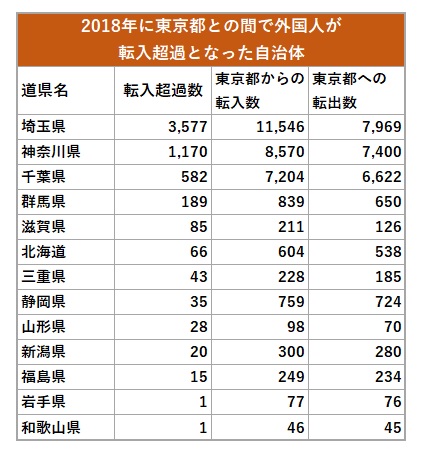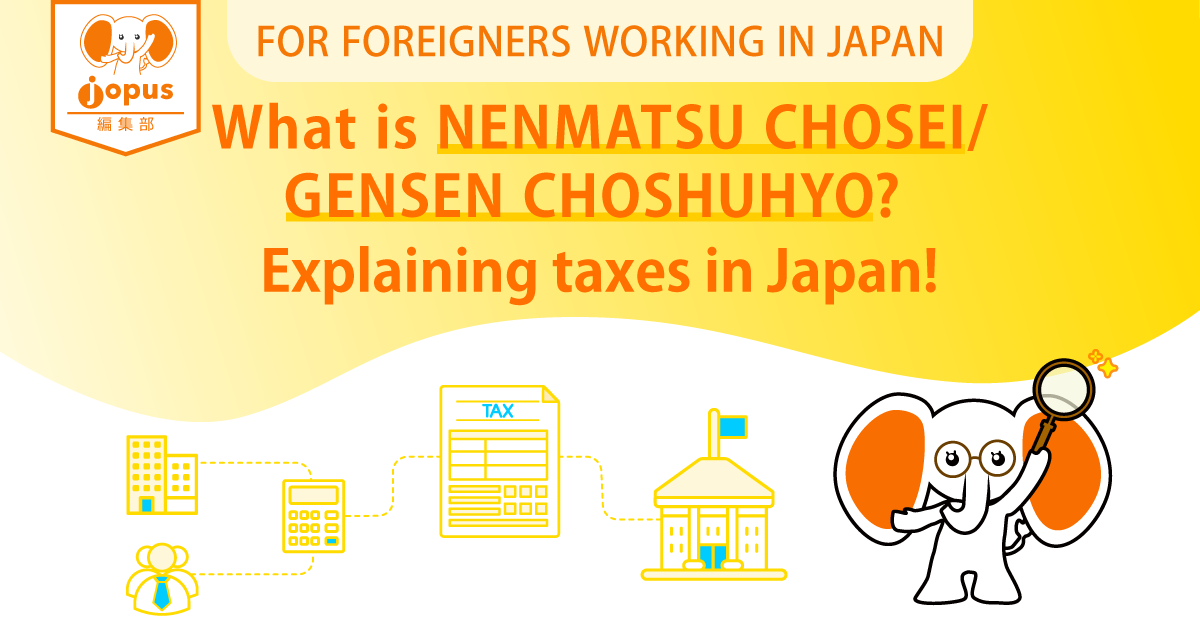According to the results of the Internal Migration 2018 report released by the Ministry of Internal Affairs and Communications on January 31, 2019, 8 prefectures (Tokyo, Saitama, Kanagawa, Chiba, Aichi, Fukuoka, Osaka and Shiga) had positive net-migration, meaning the number of people who moved into the prefecture outnumbered those of who moved out. The statistics also show the continuous centralization of population in the Tokyo Metropolitan Area (Tokyo, Saitama, Kanagawa and Chiba).
However, the migration data of foreign residents shows that Tokyo surprisingly had negative net-migration. The data showed that due to ex-pat residents moving out of Tokyo, there are 9 prefectures with positive net-migration. Some of these are neighbor prefectures to Tokyo such as Saitama, Kanagawa, Chiba, Gunma; the remaining 5 being Hokkaido, Mie, Shizuoka, Yamagata and Niigata, all non-Kanto prefectures.
 Made by using the data from Statistics Bureau, Ministry of Internal Affairs and Communication: Annual Report on Internal Migration in 2018
Made by using the data from Statistics Bureau, Ministry of Internal Affairs and Communication: Annual Report on Internal Migration in 2018These results might be attributed to the efforts of those non-Kanto prefectures to accommodate Japanese inbound tourism, including support systems established by prefectural governments to help local tourism-focused companies accept foreign workers. Local companies have also established initiatives to hire more foreign students.
For example, Niigata Prefectural Government has outsourced to the Niigata Notary Public Association to set up an employment support center for foreign workers with the intention of providing appropriate guidance and assistance to local companies who wish to accept more foreign workers.
Shiga Prefectural Government is also taking a proactive support stance towards accepting foreign workers and residents by not only providing multilingual services but also developing translation and multilingual guidelines which also recommends the use of Easy Japanese (Yasashii Nihongo) for faster and more effective communication in emergency situations.
While many technical and Japanese language institutes for foreigners are found in the Tokyo area, more and more private and public organizations outside of Tokyo are willing to accept foreign workers with the hope of addressing their decreasing populations. If you are studying in Japan and wondering where to go after graduation, finding a job in a non-Kanto prefecture could be a viable option, instead of going back home or getting a job in Tokyo.
jopus編集部
Latest posts by jopus編集部 (see all)
- 【Osaka】Corporate sales of trading companies - 11/18/2021
- 【Jopus Connecter】Web Engineer Job List - 11/1/2021
- 【October 26】Jopus Connecter version 0.3.5 Release Notes - 10/26/2021



















